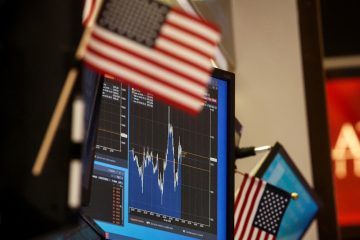The Most Important Company to Watch This Month Is…
All major U.S. indices closed higher for the fourth consecutive week, this time led by the small-cap Russell 2000, which was up 1.2%. Year to date, however, the Russell has by far been the weakest, up just 0.9%. This puts the burden for continued broad market leadership squarely on the other traditional market leader — technology.
The tech-heavy Nasdaq 100 has been up to the challenge so far, posting a 13.7% gain year to date, and is a major reason why the S&P 500 is up 8.4% in 2014. But with small caps already weak, if and when technology stocks stop leading, the overall market is likely to run into some serious problems.
My own metric, which is based on ETF asset flows, shows that the largest inflow of sector-related investor assets last week was into defensive utilities and out of industrials. Accordingly, last week’s strongest sector was utilities, up 2%, with industrials the only sector to finish the week in negative territory.
Be Aware of September Seasonal Weakness
As we move into September, a good place to begin this week’s report is with monthly seasonality. The chart shows that September is the seasonally weakest month of the year in the S&P 500 since 1957. On average, it closed 0.68% lower for the month and posted a negative monthly close 54% of the time.

This is one of several good reasons to pay particularly close attention to your stock market investments this month, and to have a defensive plan already in place in case this 56-year seasonal pattern emerges again this year.
We should also note the historical tendency for a strong fourth-quarter rebound, so even if the market does correct this month, we should be looking for near-term weakness to potentially provide better intermediate-term buying opportunities.
Editor’s note: Instead of trying to guess the best time to buy and sell, traders can rely on a proven rules-based system, eliminating emotions like greed and fear that can hurt returns. InAlpha Trader, we only purchase stocks with strong momentum and cash flow growth and sell when momentum starts to fade. To learn more about this successful system, click here.
Google Should Be a Key Influence This Month
Back in the April 28 Market Outlook, I talked about Google’s (NASDAQ: GOOGL) influence on the stock market because of its huge market capitalization and positive correlation to major indices.
Google’s positive correlation to the S&P 500 is particularly important to me this week because, while most major indices are at or near their all-time highs, the next chart shows that this market bellwether is situated just above its 200-day moving average at $ 562.

This represents a major decision point for Google, from which its larger July 2012 uptrend — as defined by its 200-day moving average, a widely watched major trend proxy — must resume if still valid. Per the correlation, I would view a sustained decline below the 200-day moving average this month as an indirect indication that the seasonal trend of September weakness in the S&P 500 may be emerging again.
Keep an Eye on Investor Fear
Another key to whether we may see a September decline this year is investor fear, which we can measure via market volatility. The next chart plots the CBOE Volatility Index (VIX), sometimes called the fear gauge, in the lower panel along with its 50-day moving average. A sustained rise above the 50-day moving average, which is currently situated at 12.68, has coincided with every countertrend decline in the S&P 500 during the past several years, most recently in July-August and April.

Therefore, an extended move above 12.68 in the VIX this month, ideally accompanied by a decline below $ 562 in Google, would suggest that the September seasonal decline is under way. Without these factors in place, however, my current bullish bias for the SPDR Dow Jones Industrial Average (NYSE: DIA), the ETF version of the Dow industrials that I first mentioned as a potential buying opportunity in the May 12 Market Outlook, remains intact.


